The Challenge: Injection molding is an essential manufacturing technique utilized across various industries, including automotive and consumer goods. Over time, the tools used in this process deteriorate, which can result in product defects. Additionally, many older tools lack comprehensive CAD documentation, making replication or modifications a complex task. Conventional reverse engineering approaches, such as manual measurements and CAD modeling, are not only time-intensive but also susceptible to errors. The primary challenge is to efficiently and precisely recreate or modify existing tools to maintain uninterrupted and high-quality production.
One of our clients found themselves in a similar situation and approached V3D Technologies for a reliable & accurate solution.
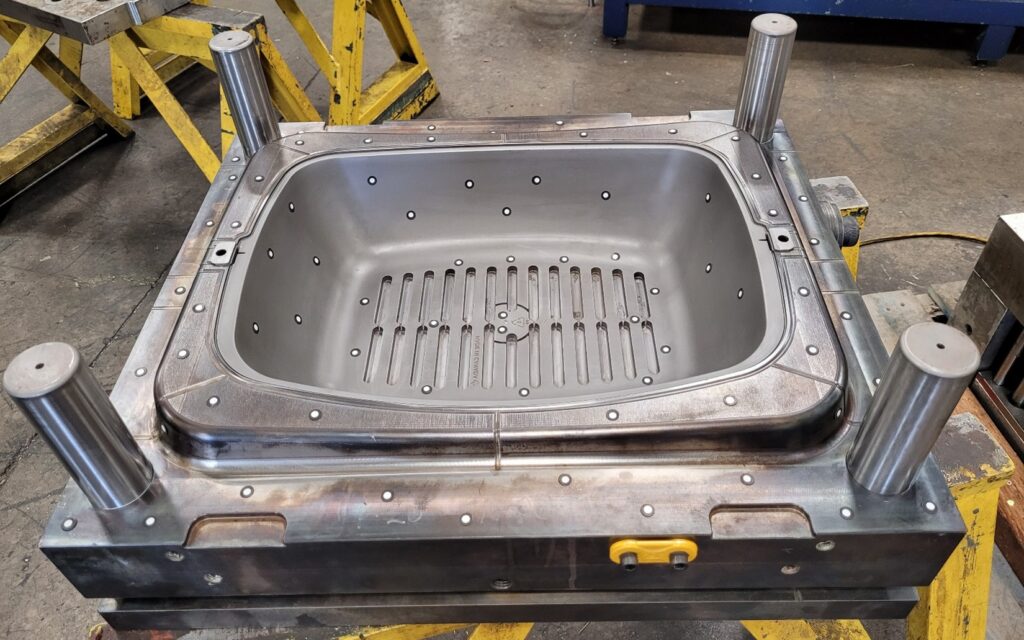
Injection Molding Tool (cavity/movable side)
(3D scanning targets placed on the tool)
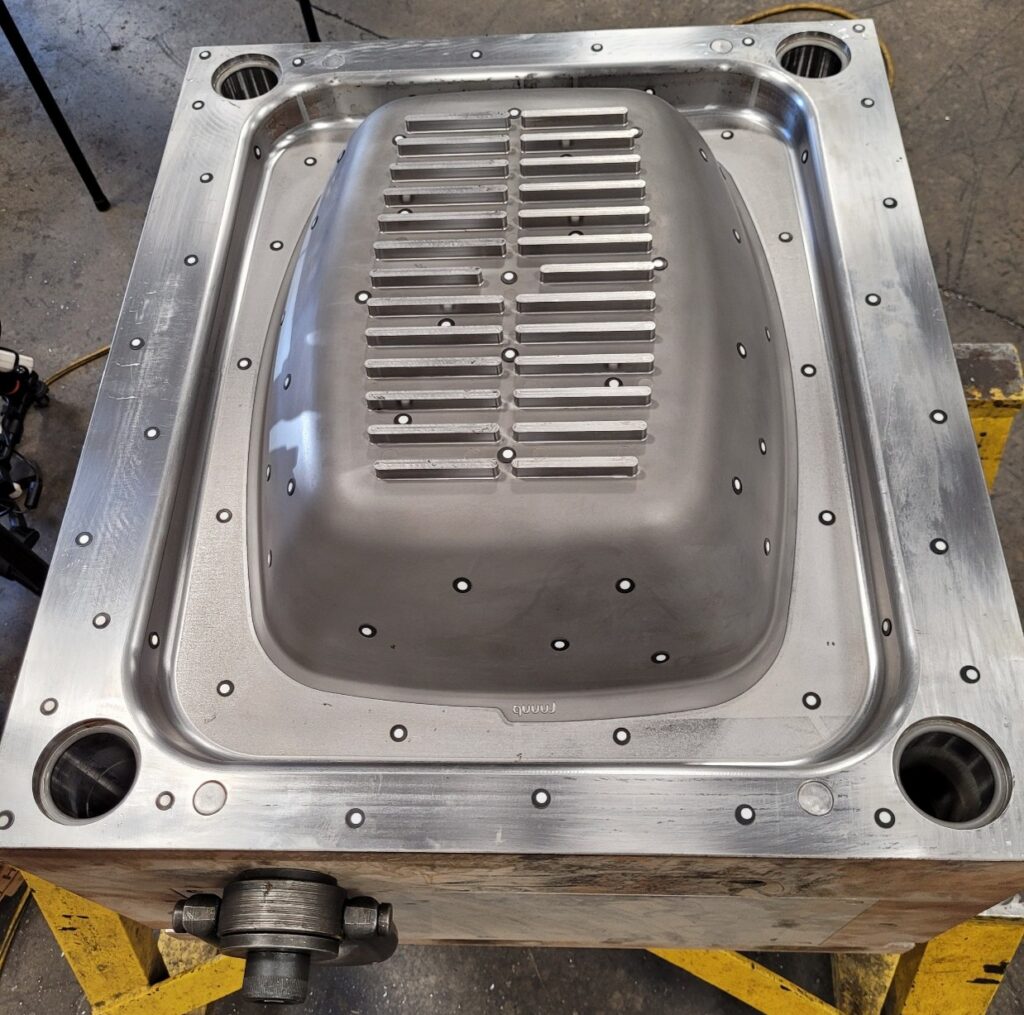
Injection Molding Tool (core/fixed side)
(3D scanning targets placed on the tool)
The Solution: V3D Technologies employs advanced 3D scanning technology to address these challenges. Using metrology grade, high precision & ISO certified 3D laser scanner, we capture detailed 3D data of the existing injection molding tool directly at the customer site. This scanning process created an accurate digital twin of the tools (both core and cavity).
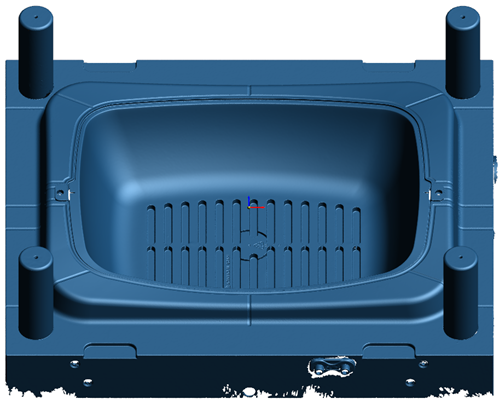
Polygon Model (scanned mesh) of Injection Molding Tool (cavity/movable side)
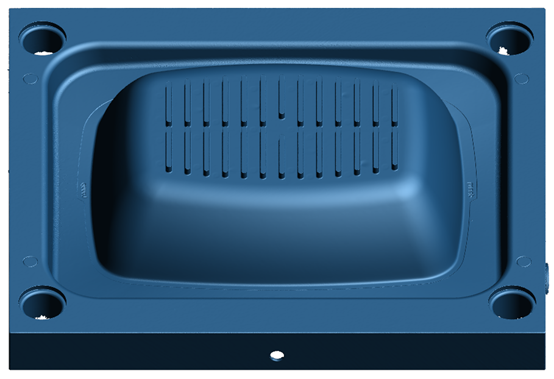
Polygon Model (scanned mesh) of Injection Molding Tool (core/fixed side)
Once the scan data was obtained, our experts used advanced Scan to CAD Reverse Engineering software to generate precise CAD models of both halves of the tool. These models served multiple purposes: they helped in tool reproduction, modifications, and performance optimization.
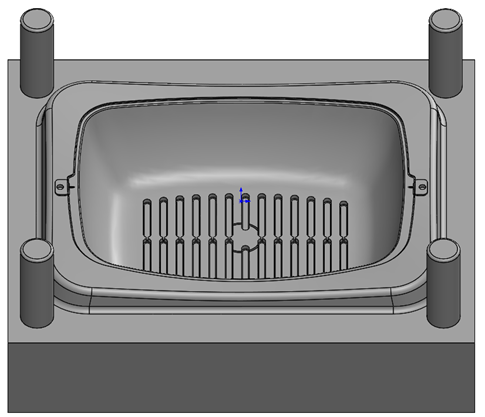
CAD Model of Injection Molding Tool (cavity/movable side)
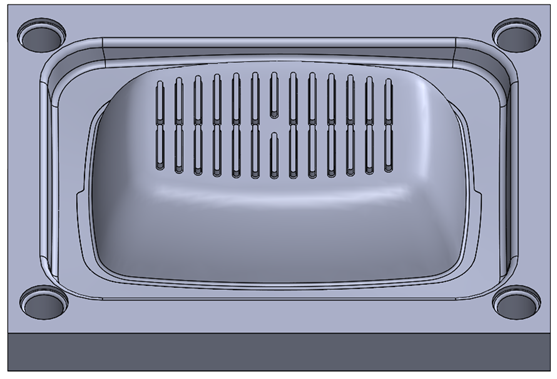
CAD Model of Injection Molding Tool (core/fixed side)
CAD models were validated by providing deviation color plot or heat map between scan and CAD. Customer was satisfied and confident to use the CAD model for their next steps.
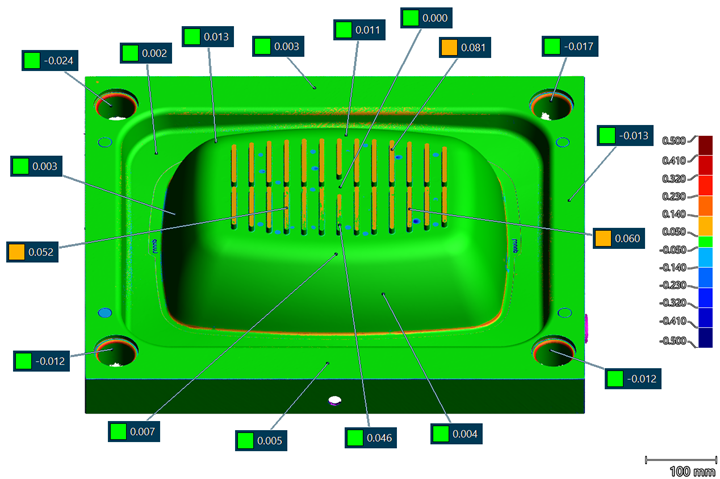
Deviation between CAD model and Polygon model of Injection Molding Tool (cavity/movable side)
(in mm, shown on scanned mesh)
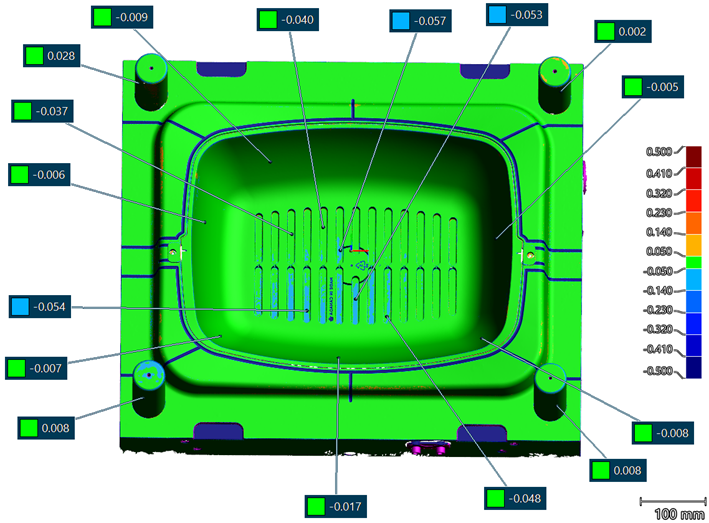
Deviation between CAD model and Polygon model of Injection Molding Tool (core/fixed side)
(in mm, shown on scanned mesh)
Overall, by leveraging 3D scanning, we reduced the time required for reverse engineering from weeks to days, significantly improving efficiency. Additionally, the high accuracy of 3D scanning ensured that every minute detail of the mold was captured, eliminating human errors associated with manual measurement methods.
Conclusion: By utilizing 3D scanning and reverse engineering, manufacturers can revolutionize the way injection molding tools are maintained, modified, and reproduced. With V3D Technologies’ cutting-edge 3D solutions, companies can ensure their tools remain in optimal condition, reduce downtime, and enhance overall productivity. Adopting this advanced technology enables businesses to streamline manufacturing processes, improve product quality, and stay ahead in a competitive market.
